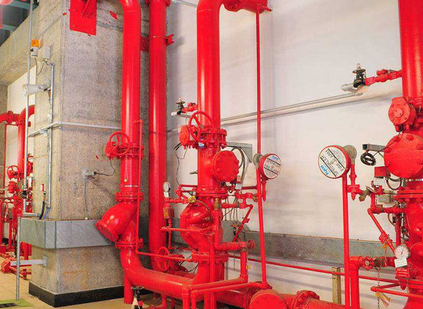Basic Testing Procedure for Indoor Fire Hydrant Pump Systems
The basic test process of the indoor fire hydrant pump system mainly includes the following steps to ensure the normal operation and reliability of the system:
1. Preliminary preparation and inspection
Check the system static pressure: First check whether the static pressure of the system is within the normal range, which helps to preliminarily determine whether the system has water leakage or insufficient pressure.
Water level check of pools and water tanks: Confirm whether the water level of pools and water tanks is sufficient to ensure that the system has sufficient water supply in an emergency.
Power supply facility inspection: Check whether the power supply facilities are normal, including power lines, switches, fuses, etc., to ensure that the system can get a stable power supply during the test.
2. Pump group test
Start the fire hydrant water supply pump:
Automatic start test: Test the fire hydrant on the roof or the test valve in the fire pump room to simulate the fire situation and observe whether the fire pump can start automatically. This usually involves the linkage of water flow indicators, pressure switches and other equipment.
Manual start test: Manually start the water supply pump and observe the operation of the pump, including the starting speed, operation stability, etc.
Main and standby pump switching test: Simulate fault conditions, such as main pump failure, to check whether the standby pump can automatically switch and operate normally. This helps ensure that the system can continue to provide stable water pressure and flow in an emergency.

3. Fire hydrant water discharge test
Select the test point:
The most unfavorable point test: Select the fire hydrant with the highest position or the farthest distance from the pump in the system for testing to verify the water supply capacity of the system under the most unfavorable conditions.
The most favorable point test: At the same time, you can also select the fire hydrant with a lower position or closer to the pump in the system for testing to obtain comprehensive performance data of the system.
Connect the pressure gauge and the cap: Connect the pressure gauge and the cap to the selected fire hydrant to accurately measure the static water pressure and water outlet pressure of the hydrant port.
Open the fire hydrant:
Measure the static water pressure: Open the fire hydrant without starting the fire pump and measure the static water pressure at the hydrant port.
Start the fire pump: Connect the water hose and water gun, start the fire pump, observe the start-up and signal display of the fire pump, and measure the water outlet pressure of the hydrant port.
Test according to the designed water output: Open the fire hydrant according to the water output designed by the system, and measure the water outlet pressure of the fire hydrant at the most unfavorable and most favorable locations respectively. This helps verify the system's water supply capacity and stability under different conditions.
4. System reset and record
System reset: After the test is completed, restore the system to the normal alert state, including closing the fire hydrant, disconnecting the pressure gauge and water hose, etc.
Record the inspection results: Record the various data and information during the test in detail, including static water pressure, water outlet pressure, pump operation, etc. These data are of great significance for subsequent system maintenance and troubleshooting.




